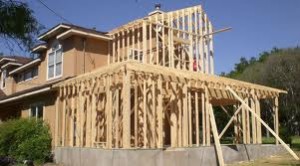We started the year with a post on Story Engineering. With two contributors in the midst of home renovations, it’s no wonder if our posts about plotting a story keep drawing analogies to architecture.
We’ve likened genre to architectural style.
We’ve said that themes and motifs provide a sense of form and function to the story you’re building.
Now let’s talk about subplots.
Whether you planned them from the outset or added them during the edit process, we might say that subplots are like additions to the original structure. We add subplots for some of the same reasons we add rooms to a house:
- To enlarge or enrich
- To make room to explore other ideas and activities
- To open up different views
A good subplot grows seamlessly out of the main structure of your story, but an addition that’s merely “tacked on” will weaken your story structure!
- A new room addition is built on a solid foundation that extends from the main structure. In the same way, any subplots you add to your story need to extend from the themes and motifs of the main story. Screen writers use this trick all the time. If the main story is about a corporate cover-up, there may be a subplot in which one of the characters is covering up some “little white lies” of their own. Deceit, in large and small ways, becomes a theme that supports both stories.
- A successful addition must also be firmly connected to the original structure at several points. Whether you’re adding on to a house or adding a subplot to a story, the new and the old should relate to each other, flowing back and forth smoothly from top to bottom, beginning to end.
- When you write “The End” be sure you cover everything. It’s as unsatisfactory to leave a subplot unresolved as it would be to leave a new room hanging out from under the cover of a roof. Either way you’ll come off “all wet.”
Exercise:
- Watch a favorite movie or TV show. (Psych or Castle come to mind.) See if you can identify the foundation, structural connections, and satisfying wrap-up of the plot and subplots.
- Read the synopsis of a classic story such as The Picture of Dorian Gray. Notice how what happens to the picture ties in with the main character arc. Do you think the picture is a motif, a subplot, or both?
- Think about the main plot and subplots of the story you’re working on. How does one tie in and strengthen the other?
















Speak Your Mind
You must be logged in to post a comment.